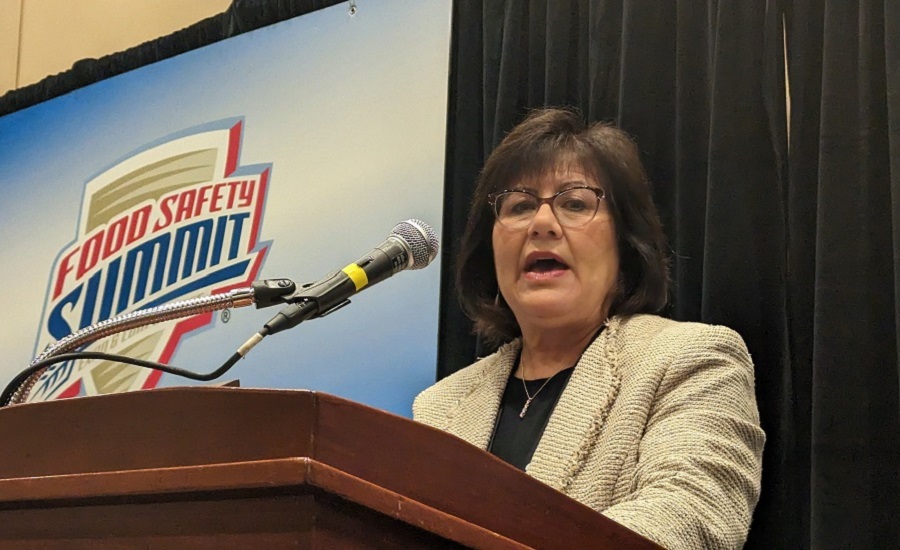Outbreaks of foodborne illnesses, foreign object contamination, and other food safety incidents are top of mind for snack and bakery professionals, or anyone working in food and beverage production. When such problems are not properly addressed, or if they keep happening again and again the consequences can be costly—or even deadly.
During “Got Root Cause?” an interactive workshop at the 2023 Food Safety Summit (taking place in Rosemont, IL, May 8–11), experts from an array of producers, government agencies, and consulting firms offered insights into the benefits of root cause analysis (RCA). The concept champions the idea of emphasizing tools and techniques that get to the core of a problem to address true causes, rather than relying on quick fixes that don't provide a more effective, long-lasting solution.
“Root cause” was defined by the experts as the true underlying reason for an issue. Then, root cause analysis (RCA) as presented a term describing a far-reaching set of approaches, tools, and techniques used to uncover what’s really causing problems.
Most of the people in attendance at the workshop (52.3%) indicated they worked in manufacturing or food processing. About 10.8% indicated they held positions in foodservice, and 9.7% responded they were employed in a service, equipment provider, or consultant role. The remainder said they worked in retail, distribution, fresh produce, government, or other areas.
Then, when asked what they perceived as their biggest obstacle to proper root cause analysis:
- Time and competing priorities: 19.4%
- Lack of training and/or expertise: 16.1%
- Cooperation issues: 12.9%
- Lack of risk-based thinking: 16.1%
- Lack of support from top management: 6.5%
- All of the above: 35%
Deb Kane (vice president of food safety, quality, EHSS, and regulatory with J&J Snack Foods) said recurring problems in food production environments are a frequent headache—and they keep popping up because responsible managers don’t always work correctly to get to the heart of the issue.
“They throw ad hoc solutions at the problem,” she commented. “Guess what? The problem reoccurs. You need to get to the true root cause to prevent reoccurrence.”
Often, she said, plant staff take corrective action that fixes the immediate, apparent issue but doesn’t get to the problem that is causing the issue. For example, she said, if an audit uncovered dirty overheads, cleaning (a corrective action) gets rid of the grime. However, the better path would be to determine what is making the overheads dirty in the first place and, if possible, taking preventive action to avoid the buildup.
Tim Jackson, senior science advisor with the U.S. Food and Drug Administration (FDA), said that root-cause analysis can be helpful in tackling problems that keep popping up in multiple places—for instance, foodborne illnesses.
“Root-cause analysis, when recurring outbreaks happen across firms, can help pinpoint a common cause and point toward a solution,” he said.
According to Natalie Dyenson, vice president of food safety and quality with the Dole Food Co., RCA proved incredibly useful when the company experienced a puzzling outbreak involving Listeria monocytogenes detected in prepackaged salad mix, which stretched across multiple state borders and years. She related that the company’s food safety experts at first suspected a number of potential causes behind the outbreak, but RCA tools helped the teams determine the rig used to harvest the produce was actually not hygienically designed, leading to contamination. Changing the equipment, she said, changed the outcome.
Tim King, founder and senior consultant of Quality Matters LLC, said he recommends not relying on actions that include a lot of “re-“ words, because they indicate the true cause behind a food-safety problem is not actually being addressed.
“Before root cause analysis: revise, remind, retrain, repair, rework. These are not fair game after root cause analysis,” he commented. “We train. We enhance. We improve.”
Those “re-“ words, King shared, indicate a leaning toward corrective action. Steering clear of revisions and retraining, he said, point toward preventive action and a more proactive approach. He also offered up informational tools and resources for attendees to take back to their workplaces to help in implementing an RCA approach.
After the midpoint break, the presenters invited attendees to break out into groups to apply lessons and tools learned in the session’s first half, to a hypothetical incident. election of hypothetical situations. In the first round, groups were tasked with determining what tools and information they might need to chase to address the presence of Listeria monocytogenes detected in a frozen appetizer. In the second round, session leaders shared information uncovered in an investigation, then challenged the breakout groups to determine the root cause of the contamination. Finallly, in the “big reveal” attendees learned that through RCA, it was determined that unvalidated process changes were they culprit, leading to contamination happening post freezing and right before packaging.
“Got Root Cause?” and select other Food Safety Summit sessions were streamed live for remote attendees, then archived for later on-demand viewing until May 2024. Register and view the sessions online.








